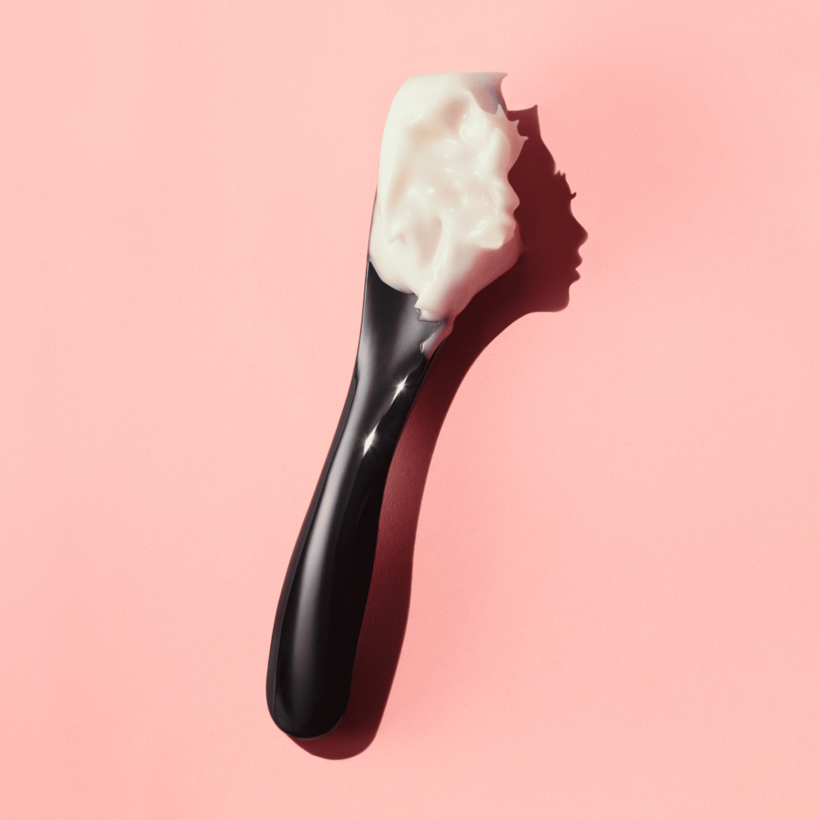The sexiest thing in the beauty world today isn’t sheathed in black lace; it doesn’t vibrate; it isn’t glossy or musky or pigmented a deep, rich red. Because the sexiest thing in beauty is a lab coat, a clinical study, and a cold and merciless before-and-after picture. Multi-syllabic, unpronounceable ingredients, dropper bottles, and ampoules—couldn’t you just swoon? We’re drunk in love with science.
Skin-care products have long assumed the air of the scientific. Now, though, nearly every new serum or cream boasts of clinical results, special compounds, necessary protocols, and some relationship, however tangential, to medicine.
“Someone told me I need medical-grade skin care,” a woman at a cocktail party blurted when we met. “What does that mean?” I tried to set her straight, but the music was too loud. Here’s my answer.
Actually, no. Let’s hear from a real expert: “Medical-grade skin care is just the biggest bunch of BS in the world,” says Dr. Ellen Gendler, a board-certified dermatologist in New York City. And in case that isn’t clear, she adds, “Medical-grade skin care is prescription medication, and the rest is just complete marketing BS.” In other words, tretinoin, the retinoid that’s available by waiting in the CVS pharmacy line, is medical grade; a serum containing vitamin C or E plucked from the shelves of Sephora, though charming, is not.
These so-called medical skin-care products, whose popularity has exploded in recent years, may have their origins less in science than in capitalism. “It’s all a business,” says Dr. Gendler. “And the anti-aging business is so big now.” These products piggyback on the advances in dermatology—Botox, injectable fillers, lasers, radio frequency, L.E.D.’s, heat treatments, and acids—that have love-bombed anyone with a face.
“People want better results. They’re no longer satisfied with just moisturization,” says Ginger King, a cosmetic chemist and brand consultant. “And, you know, moisturization can actually help with the fine lines because fine lines [are a sign of] dehydration. But people want something better.”
“Medical-grade skin care is prescription medication, and the rest is just complete marketing BS.”
What they want is something that’s “backed by science” and “clinically proven.” I’m not making this up; I’m quoting from a class-action lawsuit against Nutrafol, the hair-growth products made by Nutraceutical Wellness. The 2023 complaint alleges that Nutraceutical Wellness “deceives consumers into believing that the products are proven clinically effective and that the ingredients are medical grade treatments for hormone imbalances.” In response to a request for comment, the company issued a statement saying, “We are aware of the allegations and are resolutely and vigorously defending ourselves against these claims. Given the nature of litigation, we are unable to comment further.”
More than a few products have landed in hot water by comparing themselves to drugs. StriVectin, which currently calls itself “scientifically formulated, clinically proven skincare” on its Web site, ran magazine ads in the early 2000s connecting its anti-aging cream to a popular neurotoxin. “Better than Botox?” the ad asked, coyly. “They used a question mark. They didn’t even say, ‘Better than Botox’ exclamation point,” says King. Punctuation didn’t save StriVectin from the Food and Drug Administration, which challenged its claims. The company eventually deleted the provocative sentence.
Many skin-care products try to straddle the line between medical power and cosmetic comfort. That’s where the words “appearance of” come in. “Cosmetics only affect the appearance of the top layer of the skin,” says King. If it goes any deeper, it’s a drug.
You may have noticed this in skin-care ads, which boast that their products “improve the appearance of lines and wrinkles.” Or the redundant “visibly reduces the appearance of aging.”
There’s a list as long as a CVS receipt of troublesome words that suggest a product is a drug rather than a cosmetic. They include “recover, recovery, revitalize, revive, re-whatever,” says King. Make those claims and be prepared to lawyer up.
Some companies try to get around this by whispering to beauty editors about the wonders of their serums. Over the years, countless executives have confided in me about some magical something or other. Mid-spiel, I usually stop them and ask, “Can you claim that?” Oh, no!, they reply. We’re just telling you. That should make me feel special, but Oh, no. It doesn’t.
Just last month, two young doctors from Istanbul described their new skin-care product to editors on a Zoom call. They declared it gets rid of the fat cells in the neck and jawline “like chin liposuction.” Say what? They plan to follow that with products that reduce cellulite and stretch marks, which would be remarkable if it were possible. As icing on the cake, they flashed before-and-after pictures on the screen.
Those pictures are more deceiving than a Tinder profile, and many doctors have taken to TikTok to point out the flaws in this genre. “When a company is showing lots of before-and-after pictures versus actual data, I’m skeptical,” says Jonah Shacknai, the founder and former C.E.O. of Medicis Pharmaceutical Corporation. He started SkinBetter Science, a brand of nonprescription skin-care products sold mostly in doctors’ offices. “You can always find good before-and-after pictures that are totally unrelated to the performance of the products.” Sounds like Tinder.
Besides tinkering with lighting and angles to make the before picture look especially ghoulish and the after twinkly, there are other ways to widen the gap. In the six or eight weeks between the before and the after, staying out of the sun and getting more sleep can improve the way skin looks, says Shacknai—regardless of the product.
So what and who can you trust? The products increasingly sold in a dermatologist’s office have to be extra fine, right? Well, maybe. But they aren’t necessarily more potent or scientifically valid than what you’d find at Ulta. As at Ulta, the doctors often receive a percentage of the sale of these products. Some doctors go all in and create their own product lines, which can mean they work closely with a lab to develop effective formulas. Or it can mean that they work closely with a graphic designer to develop the label, with an ordinary formula inside the jar, picked from a supplier’s catalogue.
In other words, to quote Dr. Gendler, “Who the hell knows?”
At this point, you might be ready to coat your face with butter and call it a day. But there is something that’s powerful and clinically proven to be effective, and it deserves some airtime. Until recently, I’d never heard of it.
The ingredients are DNA-repair enzymes, and that in itself sounds like serious business. They “actually help repair the DNA that’s damaged by the sun,” says Dr. Gendler. They haven’t gotten a lot of attention, and yet they’ve been studied extensively and rigorously for decades.
These enzymes are based on work by three scientists who won a Nobel Prize in 2015. Daniel Yarosh, Ph.D., combined the enzymes with liposomes to deliver them into the skin. He has said in a video that the enzymes even out skin tone and reduce wrinkles, skin pre-cancers, and cancers.
Dr. Gendler swears by them, and she has no financial investment to speak of. “I use them every day, and I tell my patients to use them every day,” she says. “That’s legitimately something that does something.” I’m ordering them immediately.
And guess what? Even though they sound like drugs, they’re available without a prescription. The companies that make them don’t claim these powers in their marketing. And if this sounds like déjà vu all over again—another way to skirt the F.D.A. regulations—then welcome to the confounding world of skin care, where science is an art, and art is trying so very hard to be scientific. It’s that or butter.
Linda Wells is the Editor at Air Mail Look





